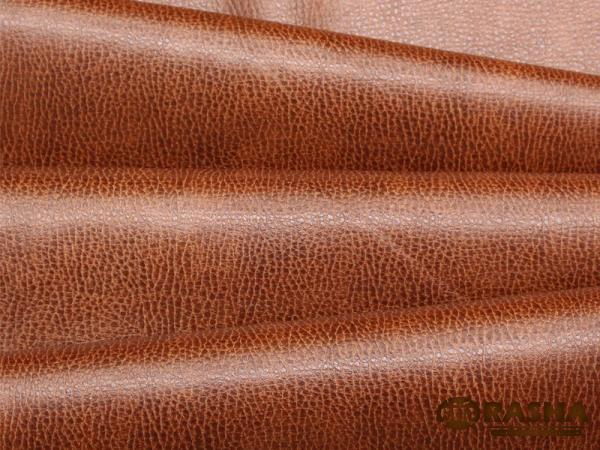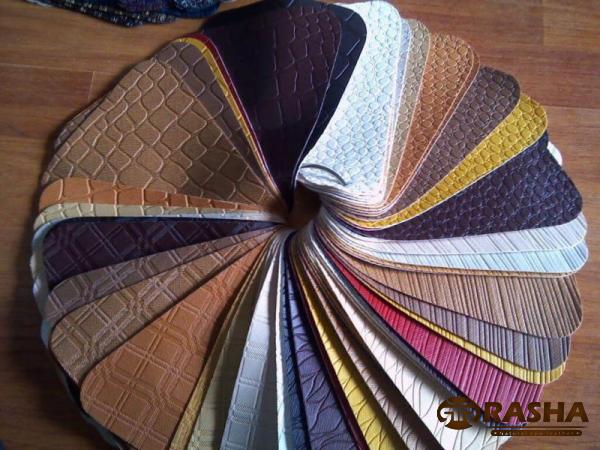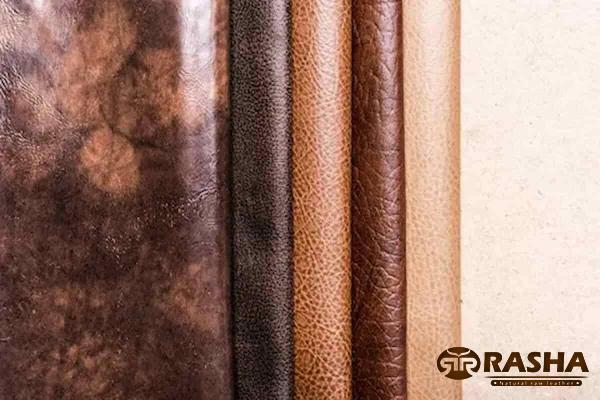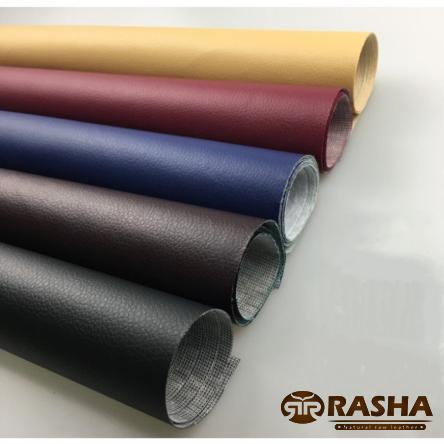In the world of leather, various types of animal hides are used to produce high-quality materials for fashion, accessories, and upholstery. Two popular choices are lamb leather and calf leather. While both offer exceptional quality and a luxurious feel, there are key differences between the two in terms of durability, appearance, texture, and price. This article aims to provide a comprehensive summary of these factors to help readers make an informed choice between lamb leather and calf leather. 1. Durability and Strength: Lamb Leather: Lamb leather is known for its softness and suppleness. It is a lightweight material, offering excellent drape and flexibility. Due to its fine fibers, lamb leather may be more prone to wear and tear, making it less durable than calf leather. However, with the right care and maintenance, it can still last a long time. Calf Leather: Calf leather, on the other hand, is recognized for its strength and durability. The thicker and more robust fibers in calf leather enhance its resistance to abrasion, making it suitable for various applications such as footwear and heavy-duty items. Calf leather is widely regarded as a stronger and sturdier option compared to lamb leather. 2. Appearance and Texture: Lamb Leather: Lamb leather is often preferred for its delicate and luxurious appearance. It has a smooth, refined texture that is extremely soft to the touch. Due to the smaller size of lambs, the leather derived from their hides tends to have smaller, more uniform grain patterns, resulting in a more consistent and uniform texture. Calf Leather: Calf leather, while maintaining its elegance, possesses a slightly coarser texture compared to lamb leather. The larger size of a calf means that the grain patterns can be more diverse and prominent, providing a slightly more natural and rugged appearance. The unique texture of calf leather often adds a touch of character to the finished product. 3. Comfort and Breathability: Lamb Leather: The softness and lightweight nature of lamb leather make it highly comfortable to wear. The suppleness and pliability allow for ease of movement, making it an ideal choice for garments such as jackets and coats. Additionally, lamb leather offers excellent breathability, ensuring comfort during warm weather. Calf Leather: Although calf leather may not be as soft and lightweight as lamb leather, it still offers a comfortable experience. The thickness and sturdiness of calf leather provide a sense of security and protection while maintaining a level of comfort. However, calf leather may not be as breathable as lamb leather due to its denser nature.

leather
 4. Price Considerations: Lamb Leather: Lamb leather is generally considered more expensive than calf leather. The delicate and refined nature of lamb leather, coupled with the limited supply and high demand, results in a higher price tag. The fine quality and luxurious feel make it a sought-after material, often associated with high-end fashion brands. Calf Leather: In comparison, calf leather is relatively more affordable than lamb leather. The larger size of calves allows for a greater amount of leather yield, making it more cost-effective. Calf leather still maintains its quality and versatility, making it a popular choice for both luxury and mid-range products. 5. Sustainability Factors: Lamb Leather: Sustainability concerns are increasingly important in the fashion industry. Lamb leather is often considered more sustainable compared to other leather types due to the animals’ shorter lifespan and smaller size. However, it is essential to consider the overall environmental impact of the tanning and production processes associated with any leather type. Calf Leather: Calf leather production requires larger quantities of raw materials and resources in comparison to lamb leather. However, reputable suppliers and manufacturers are implementing more sustainable practices, such as using vegetable tanning methods, to minimize environmental impact. It is crucial for consumers to research and support brands that prioritize ethical and sustainable leather production. Conclusion: Choosing between lamb leather and calf leather ultimately depends on personal preferences, intended use, and budget. While lamb leather offers softness, luxury, and a refined appearance, it may be less durable and more expensive. On the other hand, calf leather provides strength, durability, and a slightly more rugged appearance at a more affordable price point. Understanding the key differences between these two types of leather ensures that consumers can make an informed decision based on their specific needs and preferences.Lamb Leather vs. Calf Leather: A Detailed Comparison for Businesses When it comes to the fashion and luxury goods industry, businesses must carefully consider the material they use for their products. Lamb leather and calf leather are two common choices, each with its own unique characteristics and advantages. In this article, we will delve into the topic in greater detail and explore how these two types of leather can impact your business. 1. Product Differentiation and Brand Positioning: Choosing between lamb leather and calf leather can greatly impact the perceived quality and value of your products. Lamb leather, with its delicate and luxurious appearance, is often associated with high-end fashion brands. This can help position your brand as sophisticated, exclusive, and catering to a discerning customer base. On the other hand, calf leather, though still luxurious, provides a slightly more rugged and natural look. It can appeal to a wider range of customers and be perceived as more versatile and practical. 2. Application and Versatility: The choice between lamb leather and calf leather should also be guided by the intended application of the material.
4. Price Considerations: Lamb Leather: Lamb leather is generally considered more expensive than calf leather. The delicate and refined nature of lamb leather, coupled with the limited supply and high demand, results in a higher price tag. The fine quality and luxurious feel make it a sought-after material, often associated with high-end fashion brands. Calf Leather: In comparison, calf leather is relatively more affordable than lamb leather. The larger size of calves allows for a greater amount of leather yield, making it more cost-effective. Calf leather still maintains its quality and versatility, making it a popular choice for both luxury and mid-range products. 5. Sustainability Factors: Lamb Leather: Sustainability concerns are increasingly important in the fashion industry. Lamb leather is often considered more sustainable compared to other leather types due to the animals’ shorter lifespan and smaller size. However, it is essential to consider the overall environmental impact of the tanning and production processes associated with any leather type. Calf Leather: Calf leather production requires larger quantities of raw materials and resources in comparison to lamb leather. However, reputable suppliers and manufacturers are implementing more sustainable practices, such as using vegetable tanning methods, to minimize environmental impact. It is crucial for consumers to research and support brands that prioritize ethical and sustainable leather production. Conclusion: Choosing between lamb leather and calf leather ultimately depends on personal preferences, intended use, and budget. While lamb leather offers softness, luxury, and a refined appearance, it may be less durable and more expensive. On the other hand, calf leather provides strength, durability, and a slightly more rugged appearance at a more affordable price point. Understanding the key differences between these two types of leather ensures that consumers can make an informed decision based on their specific needs and preferences.Lamb Leather vs. Calf Leather: A Detailed Comparison for Businesses When it comes to the fashion and luxury goods industry, businesses must carefully consider the material they use for their products. Lamb leather and calf leather are two common choices, each with its own unique characteristics and advantages. In this article, we will delve into the topic in greater detail and explore how these two types of leather can impact your business. 1. Product Differentiation and Brand Positioning: Choosing between lamb leather and calf leather can greatly impact the perceived quality and value of your products. Lamb leather, with its delicate and luxurious appearance, is often associated with high-end fashion brands. This can help position your brand as sophisticated, exclusive, and catering to a discerning customer base. On the other hand, calf leather, though still luxurious, provides a slightly more rugged and natural look. It can appeal to a wider range of customers and be perceived as more versatile and practical. 2. Application and Versatility: The choice between lamb leather and calf leather should also be guided by the intended application of the material.
Specifications of leather
 Lamb leather’s lightweight and supple nature make it an ideal choice for garments such as jackets, skirts, and handbags. Its softness and flexibility allow for ease of movement and a comfortable fit. On the other hand, calf leather’s thicker and sturdier fibers make it better suited for products that require increased durability, such as shoes, belts, and upholstery. 3. Target Market and Consumer Preferences: Understanding your target market’s preferences and demographics is crucial in determining whether to use lamb leather or calf leather. Younger consumers who prioritize comfort and a luxurious feel may gravitate more toward lamb leather products. Its delicate texture and softness make it particularly appealing to this demographic. On the other hand, older consumers who value durability and longevity may prefer products made from calf leather. The rugged appearance and strength of calf leather may resonate more with this group. 4. Production Costs and Profit Margins: One important consideration for businesses is the cost of producing products using lamb leather versus calf leather. Lamb leather, being more expensive, can impact production costs and ultimately lower profit margins. On the other hand, calf leather, traditionally more affordable, can help maintain a healthy balance between quality and profitability. Pricing strategies should be carefully considered to ensure that costs are adequately covered while still maintaining competitiveness in the market. 5. Sustainable and Ethical Practices: In today’s socially and environmentally conscious world, businesses are increasingly expected to adopt sustainable and ethical practices. When it comes to leather production, it is essential to consider the welfare and sourcing of animals, as well as the impact of the tanning process on the environment. Work with suppliers who prioritize sustainable and responsible practices, such as transparent sourcing, organic and natural tanning methods, and certifications from industry organizations. This will not only contribute to your brand’s reputation but also attract customers who actively seek out sustainable and ethical products. 6. Market Demand and Trends: The preferences and demands of consumers can change over time, influenced by fashion trends, cultural shifts, and evolving consumer values. Businesses must stay attuned to these changes to ensure that their product offerings align with current market demands. Research and monitor industry trends and consumer behavior to determine whether lamb leather or calf leather is more in line with the current market preferences. This will help you maintain relevance and capitalize on emerging opportunities.
Lamb leather’s lightweight and supple nature make it an ideal choice for garments such as jackets, skirts, and handbags. Its softness and flexibility allow for ease of movement and a comfortable fit. On the other hand, calf leather’s thicker and sturdier fibers make it better suited for products that require increased durability, such as shoes, belts, and upholstery. 3. Target Market and Consumer Preferences: Understanding your target market’s preferences and demographics is crucial in determining whether to use lamb leather or calf leather. Younger consumers who prioritize comfort and a luxurious feel may gravitate more toward lamb leather products. Its delicate texture and softness make it particularly appealing to this demographic. On the other hand, older consumers who value durability and longevity may prefer products made from calf leather. The rugged appearance and strength of calf leather may resonate more with this group. 4. Production Costs and Profit Margins: One important consideration for businesses is the cost of producing products using lamb leather versus calf leather. Lamb leather, being more expensive, can impact production costs and ultimately lower profit margins. On the other hand, calf leather, traditionally more affordable, can help maintain a healthy balance between quality and profitability. Pricing strategies should be carefully considered to ensure that costs are adequately covered while still maintaining competitiveness in the market. 5. Sustainable and Ethical Practices: In today’s socially and environmentally conscious world, businesses are increasingly expected to adopt sustainable and ethical practices. When it comes to leather production, it is essential to consider the welfare and sourcing of animals, as well as the impact of the tanning process on the environment. Work with suppliers who prioritize sustainable and responsible practices, such as transparent sourcing, organic and natural tanning methods, and certifications from industry organizations. This will not only contribute to your brand’s reputation but also attract customers who actively seek out sustainable and ethical products. 6. Market Demand and Trends: The preferences and demands of consumers can change over time, influenced by fashion trends, cultural shifts, and evolving consumer values. Businesses must stay attuned to these changes to ensure that their product offerings align with current market demands. Research and monitor industry trends and consumer behavior to determine whether lamb leather or calf leather is more in line with the current market preferences. This will help you maintain relevance and capitalize on emerging opportunities.
buy leather
 7. Collaborations and Partnerships: Collaborating with other brands, designers, or artisans can offer unique opportunities for business growth. When selecting a partner, consider the material they specialize in working with, be it lamb leather or calf leather. Collaborating with a brand that specializes in lamb leather can help infuse a touch of luxury and elegance into your product line. Similarly, partnering with a brand known for its expertise in calf leather can bring a sense of durability and strength to your offerings. 8. Marketing and Brand Storytelling: The choice between lamb leather and calf leather can be leveraged as part of your brand’s story and marketing strategy. Each type of leather possesses its own qualities and characteristics, which can be used to create captivating narratives and connect with your audience. Emphasize the unique features of the leather you use, such as the softness of lamb leather or the ruggedness of calf leather, to create engaging marketing campaigns that resonate with your target market. 9. Customer Education and Transparency: Educating your customers about the differences between lamb leather and calf leather can help build trust and loyalty. Provide detailed product information, highlighting the benefits and characteristics of each type of leather. Inform customers about the source of the leather, the tanning process used, and any certifications that ensure its quality and ethical production. This level of transparency will not only enhance your brand’s reputation but also empower customers to make informed decisions. 10. Customer Preferences and Feedback: Listening to your customers is essential for any business. Take the time to understand their preferences and collect feedback on the leather materials you use. Conduct market research, surveys, and focus groups to gain insights into customer perception and satisfaction. This information will play a vital role in shaping your product development strategies, ensuring you are continually meeting and exceeding your customers’ expectations. Conclusion: Choosing between lamb leather and calf leather requires careful consideration of various factors, including the desired product aesthetics, target market preferences, and sustainability practices. By understanding these nuances and tailoring your choices to your business goals and customer demands, you can position your brand for success in the highly competitive fashion and luxury goods industry. Whether it’s the elegance of lamb leather or the durability of calf leather, your decision will influence not only the quality of your products but also the perception of your brand.
7. Collaborations and Partnerships: Collaborating with other brands, designers, or artisans can offer unique opportunities for business growth. When selecting a partner, consider the material they specialize in working with, be it lamb leather or calf leather. Collaborating with a brand that specializes in lamb leather can help infuse a touch of luxury and elegance into your product line. Similarly, partnering with a brand known for its expertise in calf leather can bring a sense of durability and strength to your offerings. 8. Marketing and Brand Storytelling: The choice between lamb leather and calf leather can be leveraged as part of your brand’s story and marketing strategy. Each type of leather possesses its own qualities and characteristics, which can be used to create captivating narratives and connect with your audience. Emphasize the unique features of the leather you use, such as the softness of lamb leather or the ruggedness of calf leather, to create engaging marketing campaigns that resonate with your target market. 9. Customer Education and Transparency: Educating your customers about the differences between lamb leather and calf leather can help build trust and loyalty. Provide detailed product information, highlighting the benefits and characteristics of each type of leather. Inform customers about the source of the leather, the tanning process used, and any certifications that ensure its quality and ethical production. This level of transparency will not only enhance your brand’s reputation but also empower customers to make informed decisions. 10. Customer Preferences and Feedback: Listening to your customers is essential for any business. Take the time to understand their preferences and collect feedback on the leather materials you use. Conduct market research, surveys, and focus groups to gain insights into customer perception and satisfaction. This information will play a vital role in shaping your product development strategies, ensuring you are continually meeting and exceeding your customers’ expectations. Conclusion: Choosing between lamb leather and calf leather requires careful consideration of various factors, including the desired product aesthetics, target market preferences, and sustainability practices. By understanding these nuances and tailoring your choices to your business goals and customer demands, you can position your brand for success in the highly competitive fashion and luxury goods industry. Whether it’s the elegance of lamb leather or the durability of calf leather, your decision will influence not only the quality of your products but also the perception of your brand.










Your comment submitted.